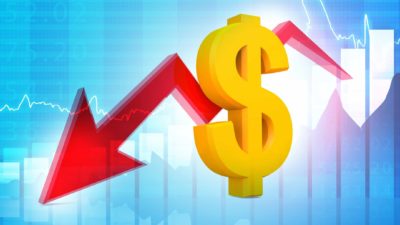It was a bit of a non event really. On Tuesday, the Reserve Bank of Australia (RBA) held its monthly meeting, and… decided to leave interest rates unchanged at 0.1%.
It was a move that surprised absolutely no one. And nor should it have. The RBA has previously flagged that it did not intend to raise interest rates again until unemployment falls to a near full level and wages and inflation start rising. And it doesn't reckon that will happen until 2024 at the earliest.
This bold and far-reaching prediction has certainly helped the Australian share market and the S&P/ASX 200 Index (ASX: XJO) over the past few months reach the precipice of its all-time high where it stands today. A growing economy with near-zero interest rates is about the best recipe you can get for higher stock prices.
But today the RBA also released its statement on monetary policy that it tends to do after its meetings. And it had some interesting tidbits.
First, the good news. The RBA noted that "the strong recovery in the Australian economy and the labour market has continued". That last aspect was especially encouraging, with the bank going on to say "Employment has also bounced back, to be above its pre-pandemic level, and the unemployment rate has declined significantly from its peak in July 2020".
RBA expects high growth, low inflation
But the bank's outlook on inflation and spending was a bit more nuanced. The RBA noted that wage growth and inflation remained low.
On wage growth, the RBA stated that "pressures have been subdued across both the private and public sectors", and noted that inflation is running at 1.1% annualised, far below its old target band of 2-3%.
However, the RBA also pointed out that Australian households still have an "unusually large amount of additional savings". It said if this excess of savings results in stronger spending patterns than normal going forward, it could set off an economic chain reaction that would result in wages and inflation rising sooner than the bank expects, perhaps as early as mid-2023. That in turn may result in the RBA being forced to tighten rates earlier than it anticipates.
But just to be clear, that is not what the RBA is expecting. The bank made it very clear once again that it doesn't see the monetary policy status quo changing until 2024. Here's what the RBA closed its statement with:
The board is committed to maintaining highly supportive monetary conditions to support a return to full employment in Australia and inflation consistent with the target. It will not increase the cash rate until actual inflation is sustainably within the 2 to 3 percent target range.
For this to occur, the labour market will need to be tight enough to generate wages growth that is materially higher than it is currently. This is unlikely to be until 2024 at the earliest.
How's that for certainty!









